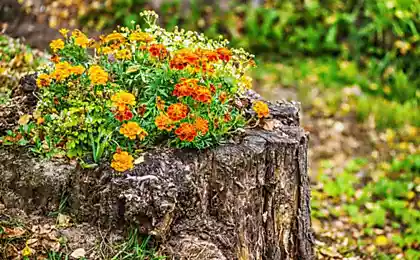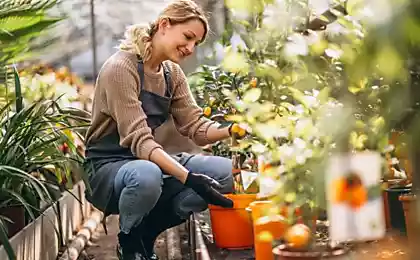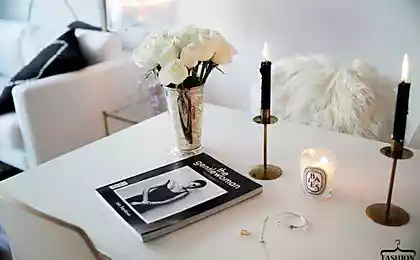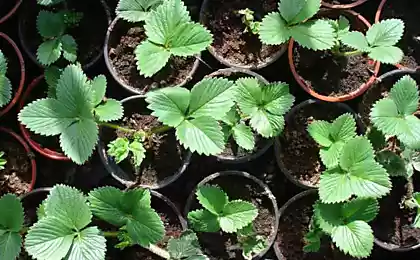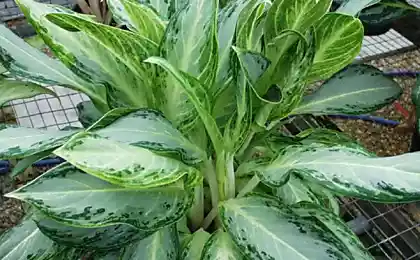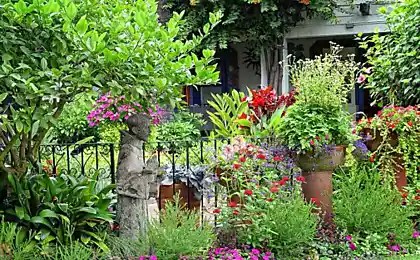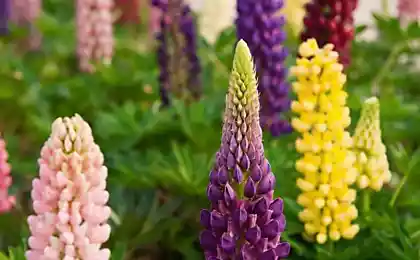450
Gloxinia care and reproduction in the home

We come to this plant from Brazil. It is herbaceous and low plant with very beautiful flowers, like roses. Flowers gloxinia can be simple, semi-double and double, as well as one-, two - and three-color. Rules of cultivation and care of this plant is not difficult, but if you want the plant please you with abundant blooms, it is all the same to them to adhere to.
Lighting
The plant belongs to light, and their successful cultivation needs long daylight hours. But it is worth remembering that it does not tolerate direct sunlight, otherwise the leaves have spots from sunburn.
An ideal place for growing gloxinia can be called a window sill facing West or East side. If you do not, the tone of the South window should be placed shading, it is enough to hang a lace curtain to diffuse the light.
In the North window, the gloxinia will have to dosvechivat, otherwise the plant will begin to stretch and lose their form. During the rest of the plant is removed in a dark place.
Temperature mode
Another important condition for the cultivation of this plant is the maintenance of temperature. This is due to the fact that the plant has periods of active growth and periods of rest. The ideal temperature in active growth period from 20 to 23 °C.
If temperaturew room with a long gloxinia is below 18°C, it will affect the growth and development of plants.
For a period of rest need a different temperature regime, at this time estanislado be kept at a temperature of from 10 to 14°C.
It should be remembered that plants are very harmful drafts and sudden temperature changes, otherwise you will not wait a long and abundant flowering.

Humidity
The ideal condition for the cultivation of gloxinia will be humidity in the range of 70-80%.But you should know that this plant does not tolerate spraying and just getting water on the leaves. For moistening of air it is better to use trays with moist pebbles. They are best to put between the pots of gloxinia.
Soil
For gloxinia need a nutritious, well-drained and light soil, it is easiest to buy in the store ready mix. Ideal podgotovleny "Violet" and "Saintpaulia". If you want to prepare the ground yourself, take one part leaf mold, one part turfy soil, one part peat and one part fine river sand. All components should be thoroughly mixed.
Capacity for planting
For planting of gloxinia goes both plastic and clay pots, special requirements here. The main thing is not to take too deep and large containers, as the roots of gloxinia grow in width, only slightly buried. Mandatory for tanks is the presence of drainage holes and the drainage layer – the plant does not tolerate stagnant moisture and waterlogging. As the drainage layer, you can use any suitable materials, such as gravel, expanded clay or foam pieces. The height of the drainage layer should be not less than 2-3 cm.
Watering
The plants are quite whimsical to moisture, but the main thing here is to know when to stop, because the flower is equally bad, and responds to overflow and prolonged drought. In the period of active growth and development of plants, the watering should be done regular and abundant, but water your gloxinia should as the drying earthen coma. Watering of gloxinia as Saintpaulia can be made using pallet or on the edge of the pot. After watering the excess water from the drip tray should be drained, and if the flower is watered from above, it is necessary to wait until the excess water will drain and just drain it from the pan.
Water for irrigation should be taken warm and settled, preferably a little warmer than room temperature. Overflow of plants and the lack of drainage can lead to rotting of plants and privalochnoj or not to use the stagnant water to lower immunity, which also gives a great risk of infection of various diseases.
During dormancy reduce watering to a minimum.
Dressing
Like most houseplants of gloxinia during the growing season fertilizing is necessary. For this approach any complex fertilizer for flowering plants.Fertilizer should be diluted according to the instructions on the package and feed the plants at most once in 10-14 days. Upon the occurrence of a rest period feeding should be stopped.
Gloxinia care in winter during the resting period
Gloxinia are plants that after flowering requires a period of rest, they regain strength for the next flowering. If your gloxinia after flowering started to turn yellow, do not worry, this indicates the onset of dormancy. At the onset of this period, the plants die and the leaves and stems and even the roots. There is only the tuber. With proper care periodperiod rest and during the whole period of the plant after winter again will delight you with abundant blooms.
After your plants have dropped their leaves, cut the remaining trunks to a height of 1-1,5 cm above soil level.After cutting leave the gloxinia for a month at her previous location and continue caring for it as usual, but gradually reducing watering and eliminating feeding. After watering down necessary to dry the soil, and gently dig up the tubers from the pot.
In order for the plant to successfully wintered need to put it in a container with moist sand, and keep in a cool, dark place. The required temperature for winter storage is from 10 to 14 °C. you Can not remove the tuber from the pot and leave to spend the winter. Watering gloxinia in the dormant period very rarely, 1-2 times a month. The dose of watering is very small, the main thing that the tubers are wet. If watering will be more abundant mogucnosti tubers to rot and the plant dies.
Gloxinia planting and transplanting
Planting and transplanting of gloxinia typically after a period of rest. If you store the tubers in sand, you need to plant them in the ground, and if they have wintered you have your usual pot, to accelerate the growth and development of plants its a good idea to replant in fresh soil.
Planting gloxinia tuber
Before planting the tuber in the ground to sledueschee sand or pochwy rinse.After that the tuber must be removed, remove old roots to explore. Upon detection of the rotten sections need to be removed with a sharp knife.After pruning it is best to soak tubers in a fungicide solution of any drug or solution of potassium permanganate for 30 minutes. After allotted time the club from a solution to extract, dry, and place slices sprinkled with powdered charcoal. Tubers after leave for a day on the air, and only then they are good to go.
The procedure of landing would not be easy. You should take a clean pot, pour drainage layer of 2-3 cm, then pour the substrate. In the substrate to make a hole the size of the tuber and put it in the tuber sprout up. The tuber should be backfilled with soil so that the surface was the Rostock. After planting, the plants watered.
Propagation by cuttings
During the multiplication of leaf cuttings from healthy adult plants are cut young leaves. Then there are two types of germination in water or directly in soil.
Germination in water. If you decide to grow the cuttings in water after cutting it must be dried a little in one hour and put in a container of clean, preferably capacino water at room temperature. In order to avoid rotting, you can add water, a little powdered coal, and to accelerate the formation of roots of any solution of root stimulator. The sheet remains in the water until, until you see roots. After their appearance the plant can be planted in the ground.
Germination in the soil. If you decide to sprout a leaf in the soil it is necessary to prepare the substrate of the following composition: three parts of fine river sand, one part peat and one part leaf soil.
In the pot is poured a layer Drenai prepared the soil and then watered. When excess moisture statelist can be planted in the pot. After landing on the page should build a hotbed or just cover with a jar. Further, the plant for the successful germination of the desired ambient temperature in the range 22 to 25°C. Typically, the sheet become overgrown 20-25 days and at its base tiny sprout.
Diseases of gloxinia
What a pleasure diseases of gloxinia amazed quite rare, mostly they suffer from lack or excess of care.
If the sheets of gloxinia there was a wet brownish stains -so your plants have zamislili was drenched with cold water.
The appearance on the leaves, yellow dry patches tells about sunburn, the place where the plant should be pritenit.
If you have started yellowing leaves means gloxinia too light, as the leaves turn yellow from the excess of nutrients or with dry air. Correct these points and the plant will recover.
Pale leaves and reduced flowering burn about citiwatch enough light or it needs feeding.published
Source: www.art-pen.ru/









